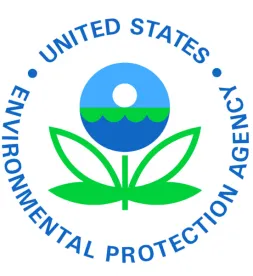The U.S. Environmental Protection Agency (“EPA”) appears to have significantly increased its enforcement of the ENERGY STAR Program’s conformity verification rules over the past year. During 2015, under the broad category of “non-lighting products,” EPA removed, or disqualified, from the Program 169 products that it had previously granted the right to bear the ENERGY STAR label. The 2015 total was more than three times the number of such products disqualified in 2014, and higher than the four prior years combined.
These figures suggest a concerted effort by EPA to more aggressively enforce ENERGY STAR testing and certification requirements and protect the integrity of the ENERGY STAR label. In light of this recent trend, companies that participate in ENERGY STAR may wish to review their internal processes for ensuring that their products remain in compliance with the Program’s specifications. Companies should also be prepared to substantiate the energy efficiency of relevant products if challenged, and familiarize themselves with the ENERGY STAR disqualification process and their rights to contest proposed disqualifications.
The ENERGY STAR Program
ENERGY STAR is one of the world’s best-known ecolabels. Established in 1992 and administered jointly by EPA and the Department of Energy, its mission is to reduce energy consumption by recognizing and promoting efficient products and buildings. The Program develops efficiency specifications for selected product categories, then grants the right to display the ENERGY STAR logo on products that have qualified by meeting the specifications. Product categories that currently have specifications in effect include most large appliances, heating, lighting, electronic equipment, and building products such as windows, doors, and roofing materials.
Product Qualification
During much of the Program’s history, manufacturers were able to “self-certify” their products’ conformity to the applicable specifications, and these certifications often received limited review. In 2010, a highly critical report by the Government Accountability Office prompted EPA to implement more restrictive procedures to qualify products to bear the Program’s label. Since then, manufacturers have been required to apply for product qualification, submitting test reports and awaiting EPA approval before using the ENEGY STAR logo. At the same time, EPA took over primary responsibility for enforcement of standards and product disqualification under ENERGY STAR.
Verification Testing and Product Disqualification
In late 2011, ENERGY STAR expanded its existing third-party verification requirement from certain lighting products to cover most other classes of products as well. Under these rules, manufacturers must contract with accredited certification bodies to test their qualified products’ conformity to applicable specifications on an ongoing basis. When a product fails a verification test, potentially indicating that the product does not meet the applicable specification, the certification body is required to report the test result to EPA within two days. Upon review, if EPA determines that a reported test failure is valid (i.e., not erroneous or insignificant), it may initiate the disqualification procedure described below.
As shown in the tables below, after third party verification testing began, disqualification of non-lighting products remained fairly consistent for the first three years (while during the same years disqualification of lighting products peaked and declined). However, in 2015 the disqualification rate for non-lighting products increased significantly, possibly indicating a change in EPA’s approach to enforcement.
Energy Star Disqualifications 2010-2015
|
Year |
Non-Lighting Product Disqualifications |
Lighting Product Disqualifications |
|
2015 |
169 |
101 |
|
2014 |
51 |
96 |
|
2013 |
36 |
202 |
|
2012 |
46 |
277 |
|
2011 |
22 |
178 |
|
2010 |
31 |
127 |
Energy Star Disqualifications by Non-Lighting Product Type 2014-2015
|
Non-Lighting Product Type |
2015 |
2014 |
|
Ceiling Fans |
0 |
5 |
|
Central Air Conditioner Equipment and Air Source Heat Pumps |
2 |
0 |
|
Commercial Griddles |
10 |
3 |
|
Commercial Refrigerators and Freezers |
1 |
3 |
|
Computers |
0 |
8 |
|
Dehumidifiers |
3 |
0 |
|
Furnaces |
8 |
3 |
|
Geothermal Heat Pumps |
2 |
3 |
|
Roofing Products |
8 |
2 |
|
Room Air Conditioners |
1 |
0 |
|
Televisions |
17 |
1 |
|
Ventilating Fans |
24 |
21 |
|
Water Coolers |
18 |
1 |
|
Windows Doors and Skylights |
75 |
1 |
Disqualification Procedure: Notification and Response
When EPA determines that disqualification is appropriate, the agency notifies the product manufacturer by email. The manufacturer then has 20 days to provide a written response to the preliminary determination. In its response, the manufacturer may elect to either (1) contest disqualification or (2) accept disqualification and follow the steps required to dissociate its product from ENERGY STAR.
The 20-day period following the initial disqualification notification is the manufacturer’s primary, and perhaps only, opportunity to defend its product. The response may include the submission of additional relevant information disputing the pending disqualification. For example, the manufacturer may present evidence to explain why the verification testing results that prompted the disqualification notice should not be credited (e.g. that the test may have been conducted on a damaged product or otherwise incorrectly). EPA will review submitted information and determine if any additional testing or analysis is necessary. After a manufacturer submits its response, there is no fixed timetable to reach a final determination. EPA will provide sufficient time to resolve questions of potential noncompliance when a manufacturer acts in good faith and as EPA deems necessary.
Effects of Product Disqualification
If the manufacturer decides not to contest disqualification, it must act within the 20-day response period to submit “product control measures” to dissociate the disqualified model from ENERGY STAR. At minimum, the manufacturer of the disqualified product is required to:
-
Immediately cease unit labeling and shipment of units bearing the ENERGY STAR logo;
-
Remove ENERGY STAR references from related marketing materials, spec sheets and websites; and
-
Cover or remove labels on units within the manufacturer’s control.
After disqualification, EPA removes the model from the ENERGY STAR Qualified Products List, posts the model on its list of disqualified products, and notifies any utilities that have opted for regular product disqualification updates. Disqualification from the ENERGY STAR program can have many additional adverse impacts, including:
-
Loss of consumer confidence;
-
Potential contract or warranty claims from customers, vendors or retailers;
-
Loss of market access;
-
Negative press coverage;
-
Disadvantage against competitors with ENERGY STAR certified products; and
-
Exclusion from federal and state government procurement contracts.
Because ENERGY STAR qualification is a criterion for EPEAT registration, covered products (which currently include computers, displays, televisions, and imaging equipment) that are disqualified by ENERGY STAR are also removed from the EPEAT registry. This in turn would significantly impact a company’s ability to sell such products to federal and state agencies and many other institutional purchasers.
ENERGY STAR is increasingly used, both formally and informally, as an efficiency guide for consumer and government purchasing outside the U.S. The Program’s list of international partners includes Canada, the E.U. and Japan, and several other countries refer to ENERGY STAR in their procurement rules without forming partnership agreements with EPA. Disqualification from ENERGY STAR therefore has global implications for a product’s marketability.






 />i
/>i

